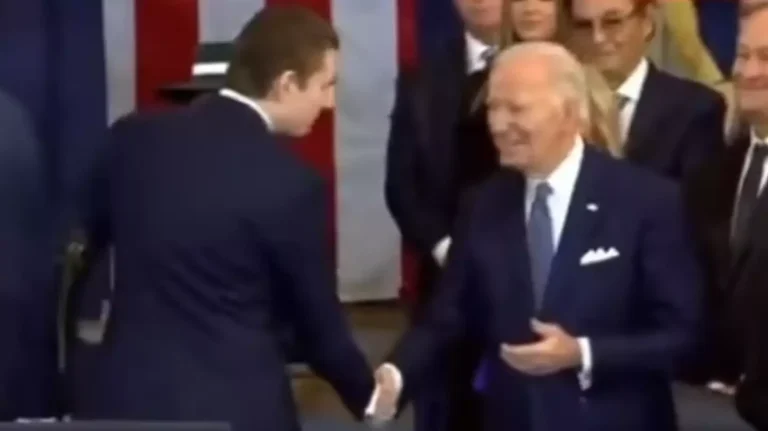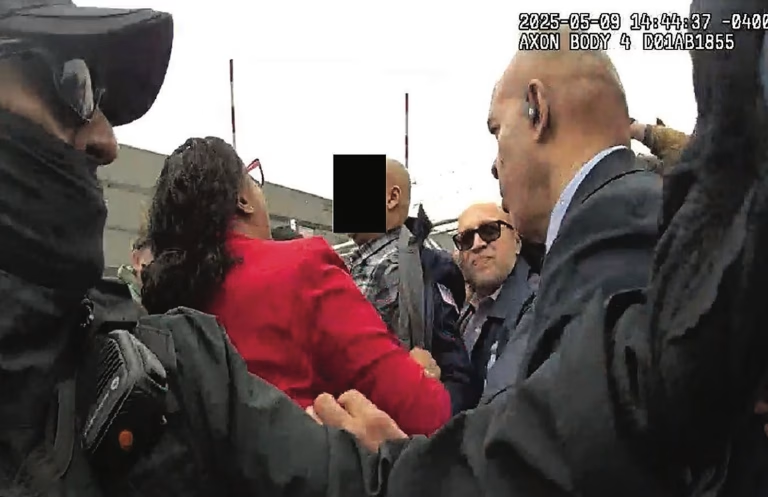
Current U.S President Donald Trump ignited a political firestorm on Thursday on his social media platform Truth Social.
He was sharply criticizing a group of Democratic lawmakers who released a video urging members of the U.S. military and intelligence community to follow only lawful orders.
The clash has intensified an already tense national conversation about civil-military relations and the responsibilities of elected officials during moments of political division.
Democratic Lawmakers Release Video Emphasizing “Lawful Orders”
The situation escalated when Rep. Elissa Slotkin of Michigan posted a video featuring several Democratic senators and representatives — all of whom previously served in the military or national security roles (veterans). Speaking directly to active-duty service members and intelligence personnel, the lawmakers highlighted what they described as the importance of adhering to the Constitution, even under political pressure.
“We know the responsibilities on your shoulders are enormous,” one of the lawmakers said in the video. They emphasized that military officials swear an oath to the Constitution rather than any individual leader. According to them, U.S. law makes clear that service members are obligated to reject unlawful commands.
The lawmakers did not reference any specific policies, disputes, or hypothetical situations. Instead, they framed the video as a message of reassurance amid what they described as political tension affecting the relationship between civilian leadership and the armed forces.
Trump Responds With Strong Accusations
Trump reacted swiftly, posting multiple messages on “Truth” accusing the lawmakers of inappropriate conduct. He argued that their video could encourage defiance within the military and suggested it crossed a legal or ethical line.
His statements escalated throughout the morning, framing the lawmakers’ actions as unacceptable and claiming the comments could undermine confidence in civilian leadership.
In several posts, Trump used forceful language to criticize the Democratic officials, expressing concern that their remarks could erode trust and discipline within the military.
He re-truthed few articles and commentary from other social media users who also disagreed with the video’s messaging. While few of the posts he shared included extreme rhetoric, the statements were part of a broader online debate about the boundaries of political speech directed at active-duty personnel.
White House Clarifies Trump’s Position
During a Thursday press briefing, White House Press Secretary Karoline Leavitt was asked directly whether Trump supported punitive action against members of Congress based on the social media discussion. She responded, “No” distancing the administration from interpretations that Trump was calling for extreme measures.
Maybe our President felt in that way in the very moment but after cooling off he overthinked his reactions.
Leavitt said that the focus should be on the lawmakers’ video itself rather than Trump’s reaction. She criticized the message the Democratic officials delivered, claiming it encouraged service members to question lawful presidential directives. While she did not specify any particular statute, she suggested the video raised legal concerns and said that such questions would need to be assessed by the appropriate federal departments.
“I’m not a lawyer,” she said. “We’ll leave those determinations to the relevant authorities.”
Lawmakers Push Back Against Trump’s Allegations
The group of Democratic lawmakers involved in the video released a joint statement several hours after Trump’s posts. They expressed concern about the aggressive tone of the debate online and called on Americans to reject heated political rhetoric.
“What is most concerning is that restating well-established law is now being portrayed as something improper,” the statement read. They reiterated that their message was simply an affirmation of constitutional principles that guide the military and national security community.
“Our servicemembers deserve clarity and confidence in the lawful framework under which they operate,” they continued, adding that they remain committed to upholding the constitutional roles of both Congress and the military.
A Broader Debate Over Civil-Military Boundaries
Political analysts note that this dispute reflects larger national tensions over the appropriate relationship between political leaders and the armed forces. In recent years, both parties have accused the other of sending inappropriate signals to military personnel during periods of political disagreement.
Experts emphasize that the question of “lawful orders” is a long-standing issue in military practice. Service members receive training on the distinction between legal and illegal commands, and the Uniform Code of Military Justice provides guidelines for assessing those situations. While disagreements about political messaging are not new, public exchanges between elected officials and former presidents can bring heightened visibility and concern.
Growing Concerns About Political Rhetoric
The incident also adds to the ongoing conversation about how political leaders communicate online. While social media allows public officials to speak directly to large audiences, critics argue that it has simultaneously escalated political tension and made nuanced discussions more difficult.
Nonpartisan experts warn that intense rhetoric, even when not intended to encourage extreme interpretations, can increase the risk of public misunderstanding. Many urge leaders from both parties to adopt a more measured tone when discussing the military, given its unique role in upholding democratic institutions.
What Comes Next
It remains unclear whether any formal review or investigation related to the video will occur. For now, the dispute continues primarily in the political arena, with both sides defending their intentions and criticizing the other’s interpretation.
As the 2025 political environment grows more contentious, moments like this underscore the challenges facing the country’s leaders — and the importance of maintaining clear and responsible communication about institutions as central as the U.S. military.
What do you think about this? Please share your thoughts in comments below.


